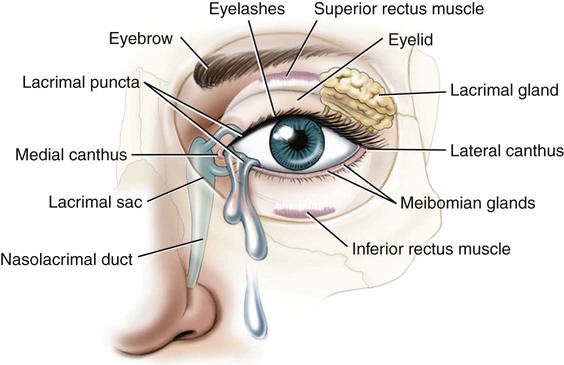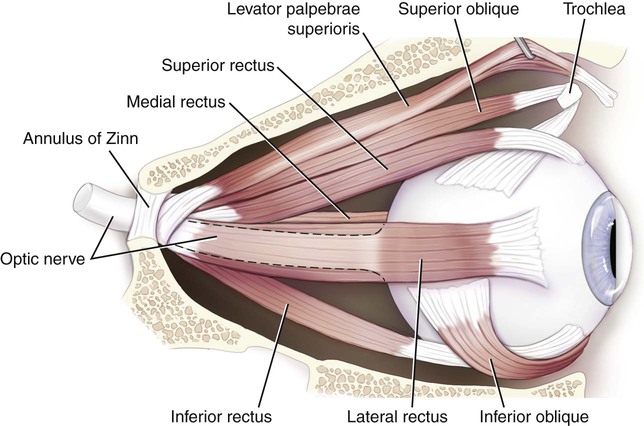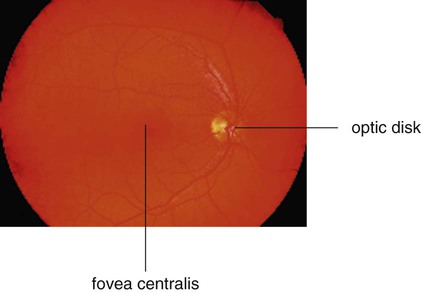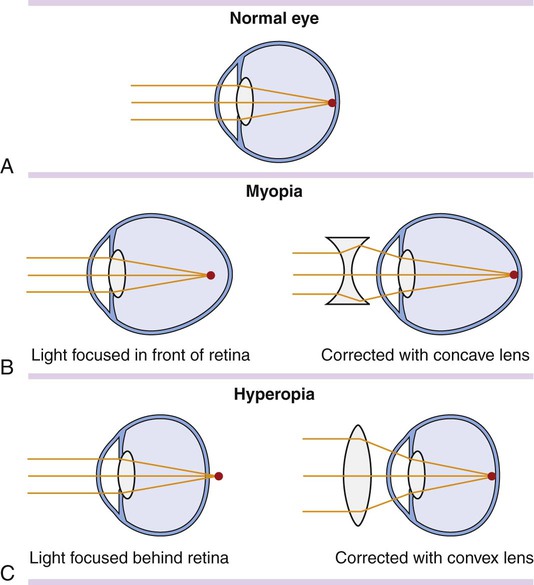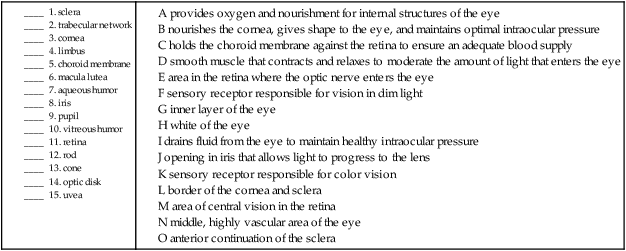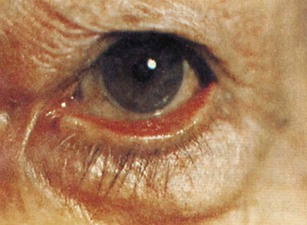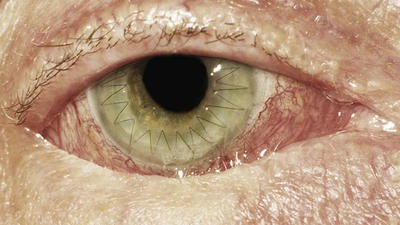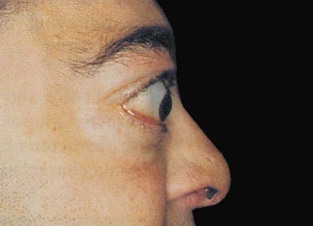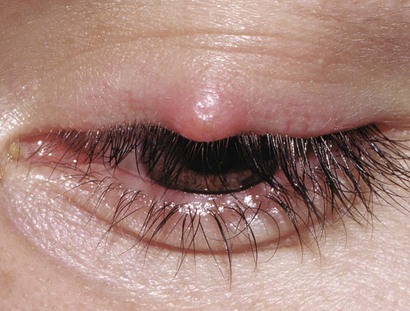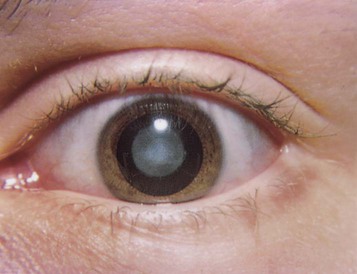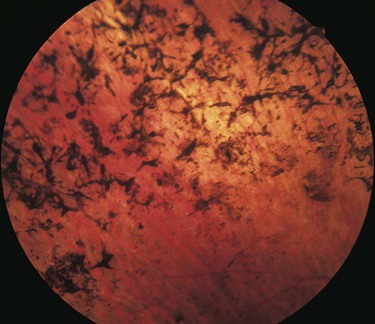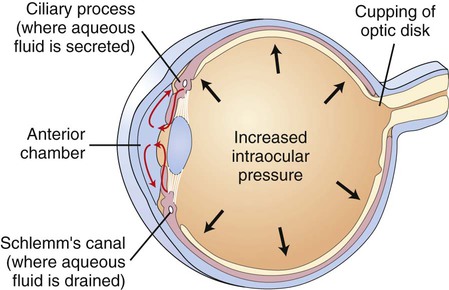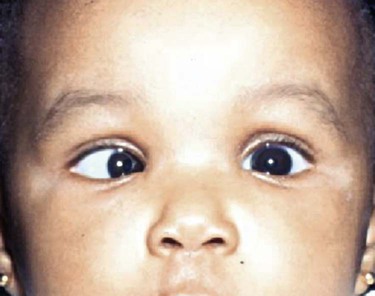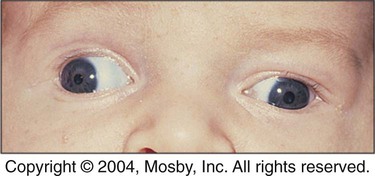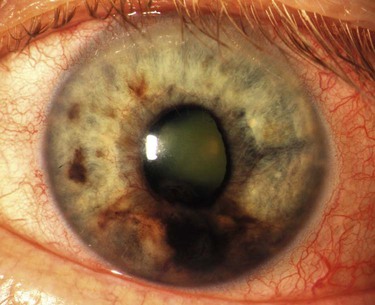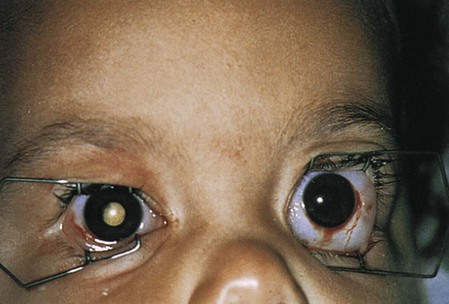Each of our paired eyes is encased in a protective, bony socket called the orbit or orbital cavity. Within the orbit, the eyeball is protected by a cushion of fatty tissue. The eyebrows mark the supraorbital area and provide a modest amount of protection from perspiration and sun glare. Further protection is provided by the upper and lower eyelids and the eyelashes that line their edges (Fig. 13-1). The extraocular muscles attach the eyeball to the orbit and, on impulse from the cranial nerves, move the eyes (Fig. 13-2). These six voluntary (skeletal) muscles are made up of four rectus (straight) and two oblique (diagonal) muscles. The origin of five of these muscles is in a ringlike structure surrounding the optic nerve behind the eyeball called the annulus of Zinn (also referred to as the annular tendon). This is mentioned only because later, when the lens of the eye is described, another structure in the lens called a zonule of Zinn will be named. Note that the muscle to raise the eyelids, the levator palpebrae superior muscle, is also labeled. “Levator” is used for any muscles whose function it is to elevate a structure. When this muscle is dysfunctional, it can result in an eyelid that droops (ptosis). The orbicularis oculi are the sphincter (ringlike) muscles that close the eye. The anatomy of the eyeball itself is traditionally explained in three layers or tunics. The outer layer, or fibrous tunic, consists of the sclera and cornea. The middle layer, or vascular tunic, is composed of the choroid, ciliary body, and iris. The inner layer, or nervous tunic, consists of the retina (Fig. 13-3). The inner layer of the eye, called the retina, is composed of several parts. The pars optica retinae contain the sensory receptors (rods and cones), the optic disk, the ora serrata, the macula lutea, and the fovea centralis. This layer is nourished by the retinal vessels that radiate from the optic nerve (Fig. 13-4). The sensory receptors for the images carried by the light rays are named for their appearance. They are the rods, which appear throughout the retina and are responsible for vision in dim light and the cones, which are concentrated in the central area of the retina and are responsible for color vision (Fig. 13-5). Three types of cones, termed L, M, and S (for long, medium, and short) cones, are endowed with photopigments that react to different wavelengths of light that produce the perception of red, green, and blue vision. Those individuals who have difficulty with their color vision (through inheritance or trauma) have deficiencies in one or more of these cones. Two important mechanisms contribute to the ability to see. As light hits the eye, it passes first through the cornea, which bends the rays of light (refraction) so that they are projected properly onto the receptor cells in the eye. The muscles in the ciliary body adjust the shape of the lens to aid in this refraction. The lens flattens to adjust to something seen at a distance, or thickens for close vision (a process called accommodation). Errors of refraction are the most common reason for lens prescriptions. See Figure 13-6 for an example of refraction in normal vision, as well as in nearsightedness (myopia) and farsightedness (hypermetropia), and how they are corrected through the use of corrective lenses. Combining Forms for the Anatomy and Physiology of the Eye Terms Related to Disorders of the Eyelid, Lacrimal System, and Orbit (HØØ-HØ5)
Eye and Adnexa
 Recognize and use terms related to the anatomy and physiology of the eye.
Recognize and use terms related to the anatomy and physiology of the eye.
 Recognize and use terms related to the pathology of the eye.
Recognize and use terms related to the pathology of the eye.
Anatomy and Physiology
Ocular Adnexa
The Eyeball
The Inner/Nervous Layer (Retina)
Vision
Meaning
Combining Form
choroid
choroid/o
ciliary body
cycl/o
conjunctiva
conjunctiv/o
cornea
corne/o, kerat/o
corner (of eye)
canth/o
eye
ophthalm/o, ocul/o
eyelid
blephar/o, palpebr/o
iris
irid/o, ir/o
lacrimal (tear) gland
dacryoaden/o
lacrimal (tear) sac
dacryocyst/o
lens
phak/o, phac/o
limbus
limb/o
macula lutea
macul/o
notched
serrat/o
optic disk
papill/o
orbit
orbit/o
pupil
pupill/o, core/o, cor/o
retina
retin/o
sclera
scler/o
tarsal plate (of the eyelid)
tars/o
tears
lacrim/o, dacry/o
uvea
uve/o
vision
opt/o, optic/o
vitreous humor
vitre/o, vitr/o
Pathology
Term
Word Origin
Definition
blepharitis
blephar/o eyelid
-itis inflammation
Inflammation of an eyelid.
blepharochalasis
blephar/o eyelid
-chalasis relaxation, slackening
Hypertrophy of the skin of the eyelid.
blepharoptosis
blephar/o eyelid
-ptosis drooping, prolapse, falling
Drooping of the upper eyelid. ![]()
Stay updated, free articles. Join our Telegram channel

Full access? Get Clinical Tree

 Get Clinical Tree app for offline access
Get Clinical Tree app for offline access


